Tiffany Lamp Auction & Appraisal
History: Glass Lamps from Tiffany Studios
Discover why and how Tiffany stained glass lamps came to be one of the most collective antiques on the market:
In his late teens and early 20s, Louis Comfort Tiffany traveled extensively through Europe, North Africa, and the Middle East, where he was inspired by the diversity and beauty of the art and architecture he observed. He returned to the states in 1872 and began his studies in glass and mosaics. He is credited with the creation of “opalescent” or “iridescent” glass and used unique approaches and styles to create his iconic glasswork.
Louis Tiffany incorporated the Tiffany Glass Company in 1885; it was renamed Tiffany Glass & Decorating Company in 1892 and then, finally, Tiffany Studios in 1900. He exhibited early examples of his glass lamps at the Chicago World’s Fair in 1893, catching the attention of museums and collectors on both sides of the Atlantic, but his first commercially produced lamps appeared around 1898.
In addition to lamps, Tiffany Studios also produced vases and other glass vessels, tiles, stained glass windows, glass mosaics, and desk furniture. The studio’s client list included such notables as Mark Twain, Cornelius Vanderbilt, and even the White House. Due to the popularity of Tiffany’s work, forgeries and reproductions abound—some even dating back to the early 1920s.
Today, genuine Tiffany stained glass lamps can be worth a small fortune. Original pieces made between 1890 and 1930 can be worth anywhere from $5,000 to over $1 million. The highest ever paid was $3.37 million at an auction in 2018.
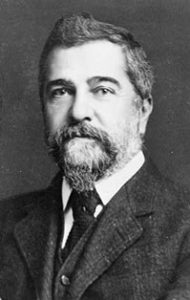
| Name: | Louis Comfort Tiffany, Tiffany Studios |
| Born: | February 18, 1848 |
| Died: | January 17, 1933 |
| Country: | United States |
| Movements: | Art Nouveau, Aesthetic |
| Media: | Stained glass lamps, vases, windows, bottles, mosaics |
Why Tiffany Lamps?
Tiffany stained glass lamps are renowned for their distinctive look and impeccable quality.
Tiffany Studios lamps are known for their exquisite craftsmanship, high-quality materials, and, nowadays, their rarity. In fact, Tiffany actually invented a new way of attaching stained glass by use of a copper foiling technique; this process removed the need to connect glass pieces with heavy rods, resulting in an overall more delicate look and feel. Tiffany also invited an entirely new type of glass, favrile glass, by means of blending various colors together to create an iridescent color. Both of these exciting manufacturing advancements, along with the bespoke, artisan materials used by craftsmen, make Tiffany stained glass lamps a unique, collectible item.
And, as is typical in the art world, the rarity of an item increases its value. Authentic Tiffany Studios lamps are uncommon because there are so few of them globally, especially in good condition. Tiffany Studios stopped producing the lamps early in the 20th century, so they are a treasured find today.
Cottone Auctions specializes in Tiffany Studios Glass Lamps & Artwork.
View recent auction results:
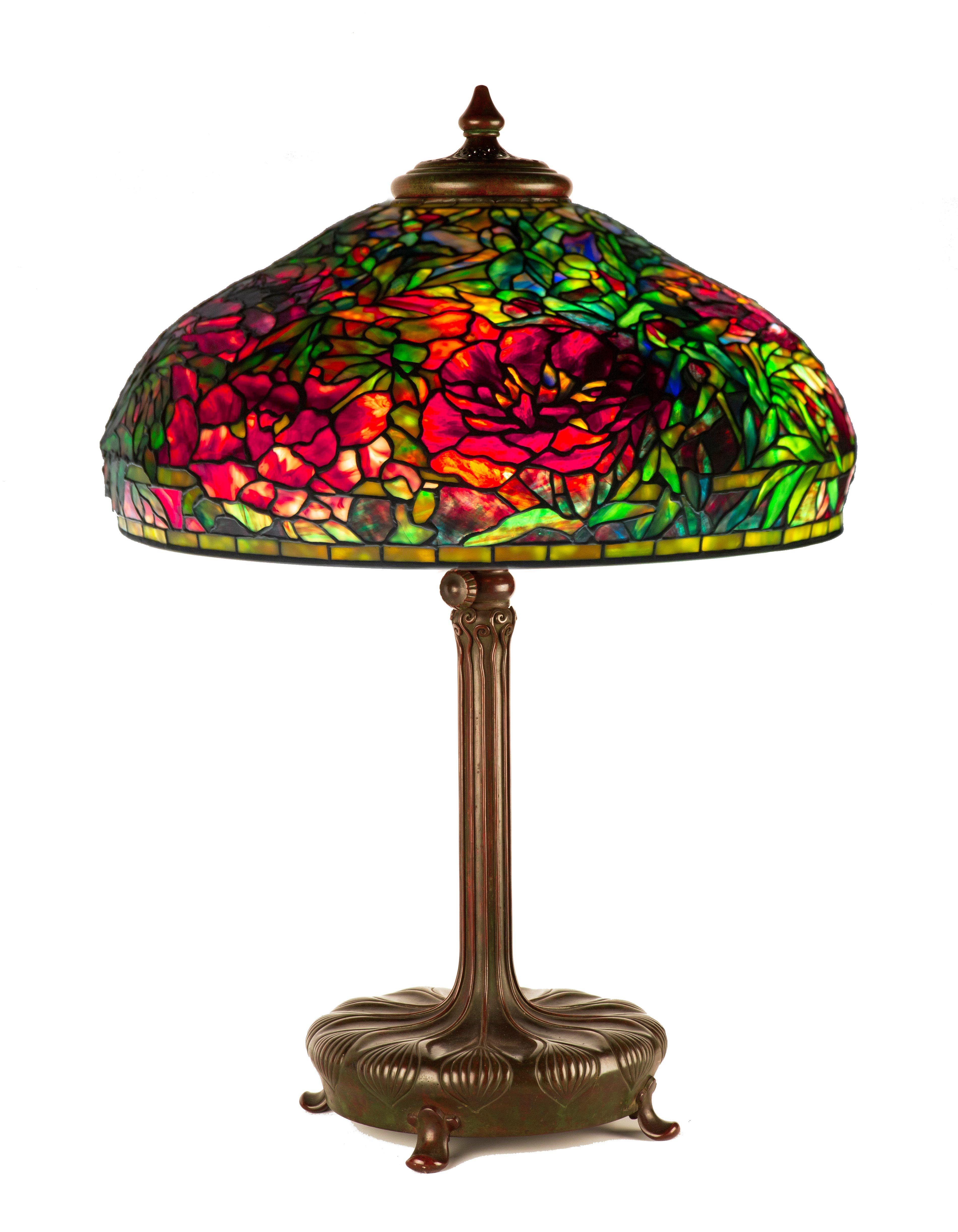
Fine & Rare Tiffany Studios, NY, “Elaborate Peony” Table Lamp
Hammer Price:
$390,000
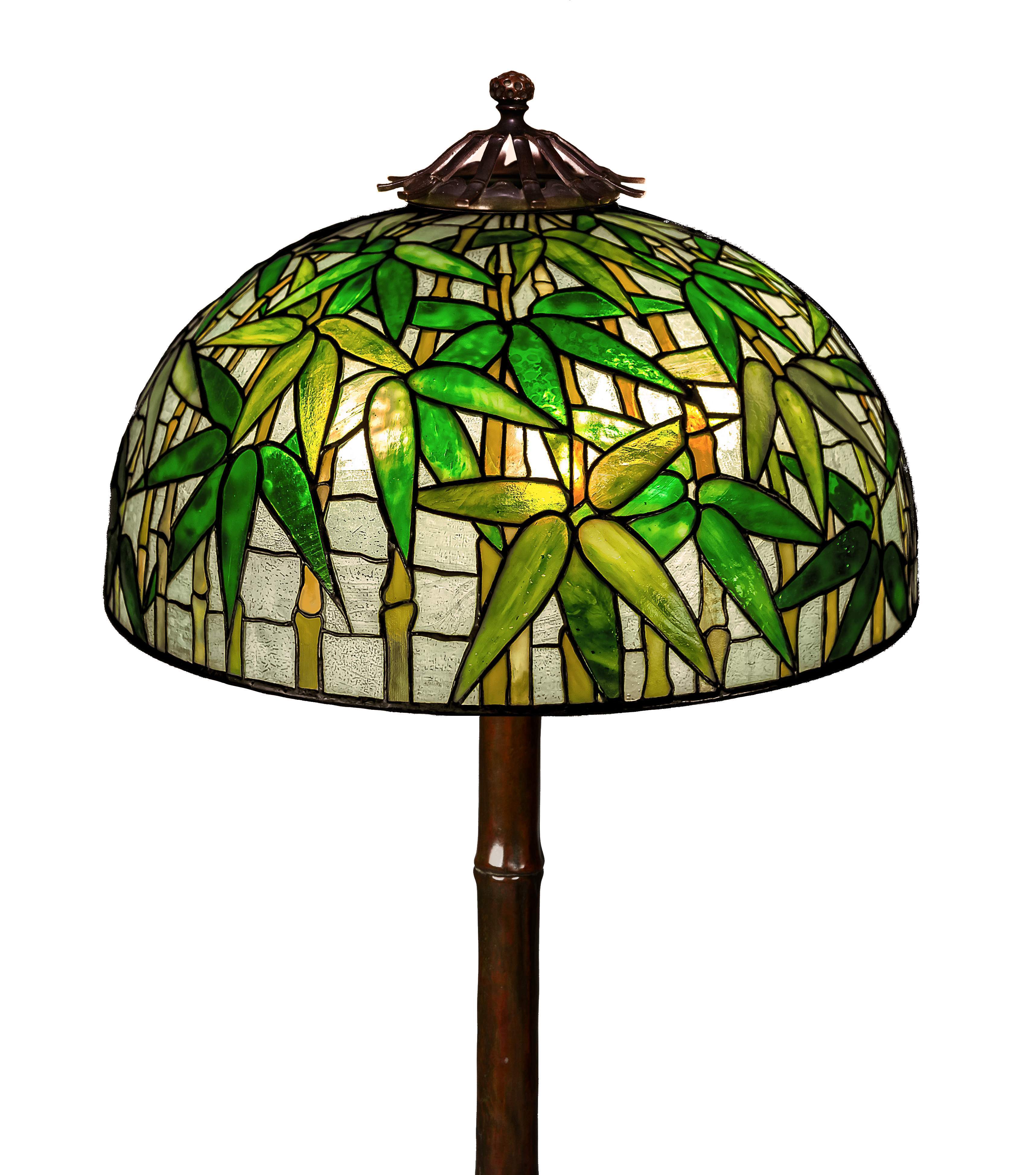
Tiffany Studios, NY, Bamboo Floor Lamp
Hammer Price:
$241,000
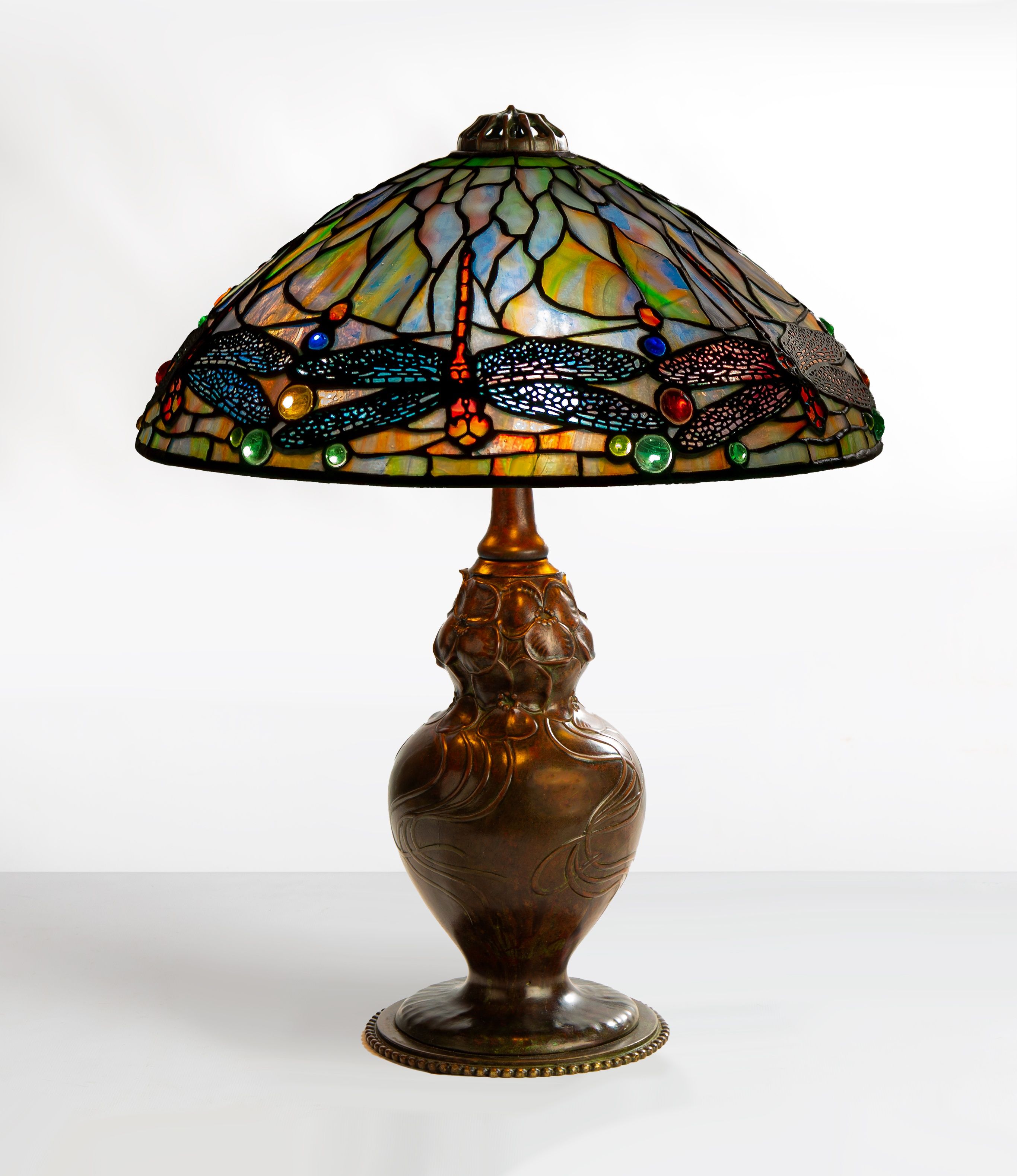
Tiffany Studios, New York “Jeweled Dragonfly” Table Lamp
Hammer Price:
$163,200
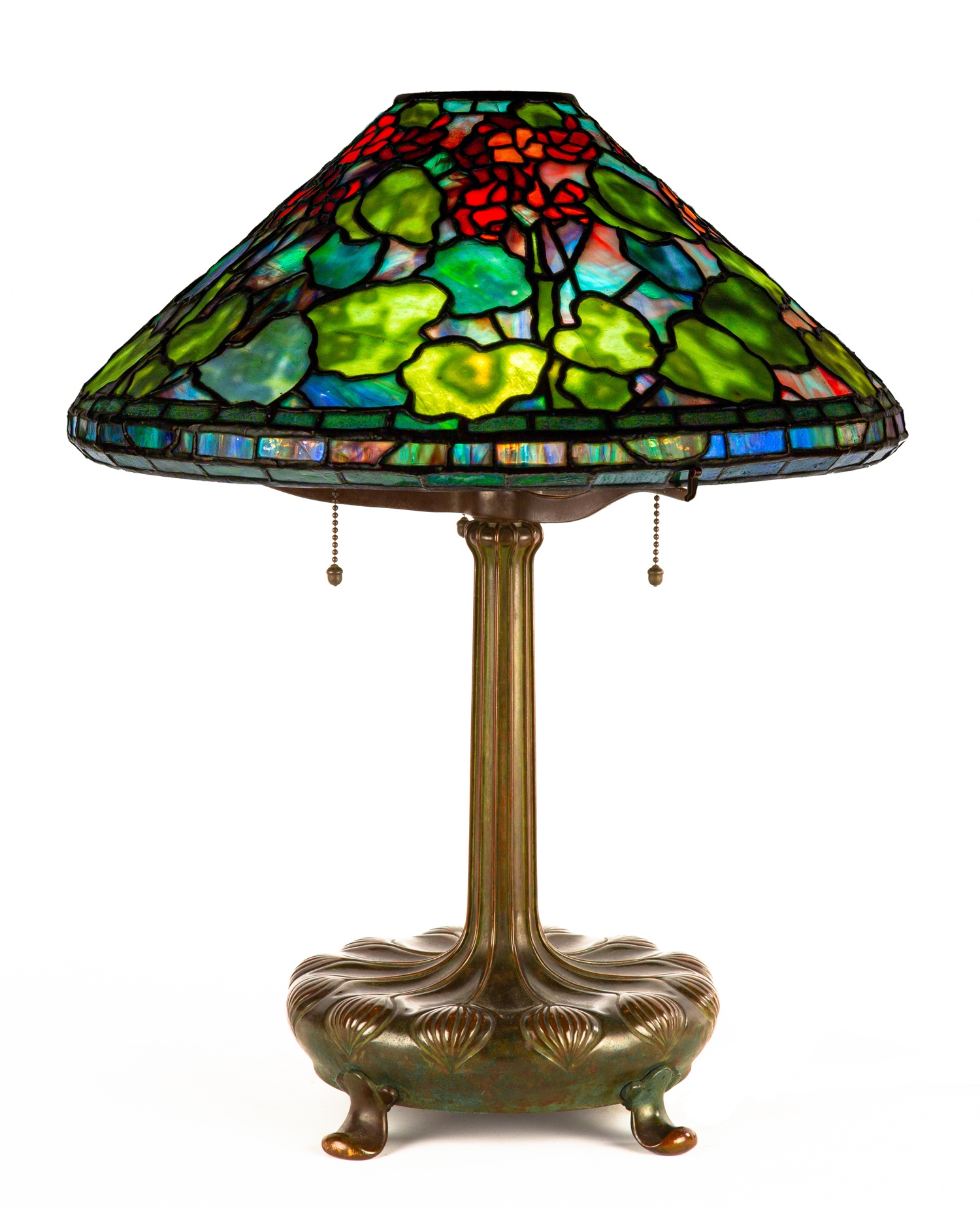
Tiffany Studios, New York Geranium Lamp
Hammer Price:
$124,800
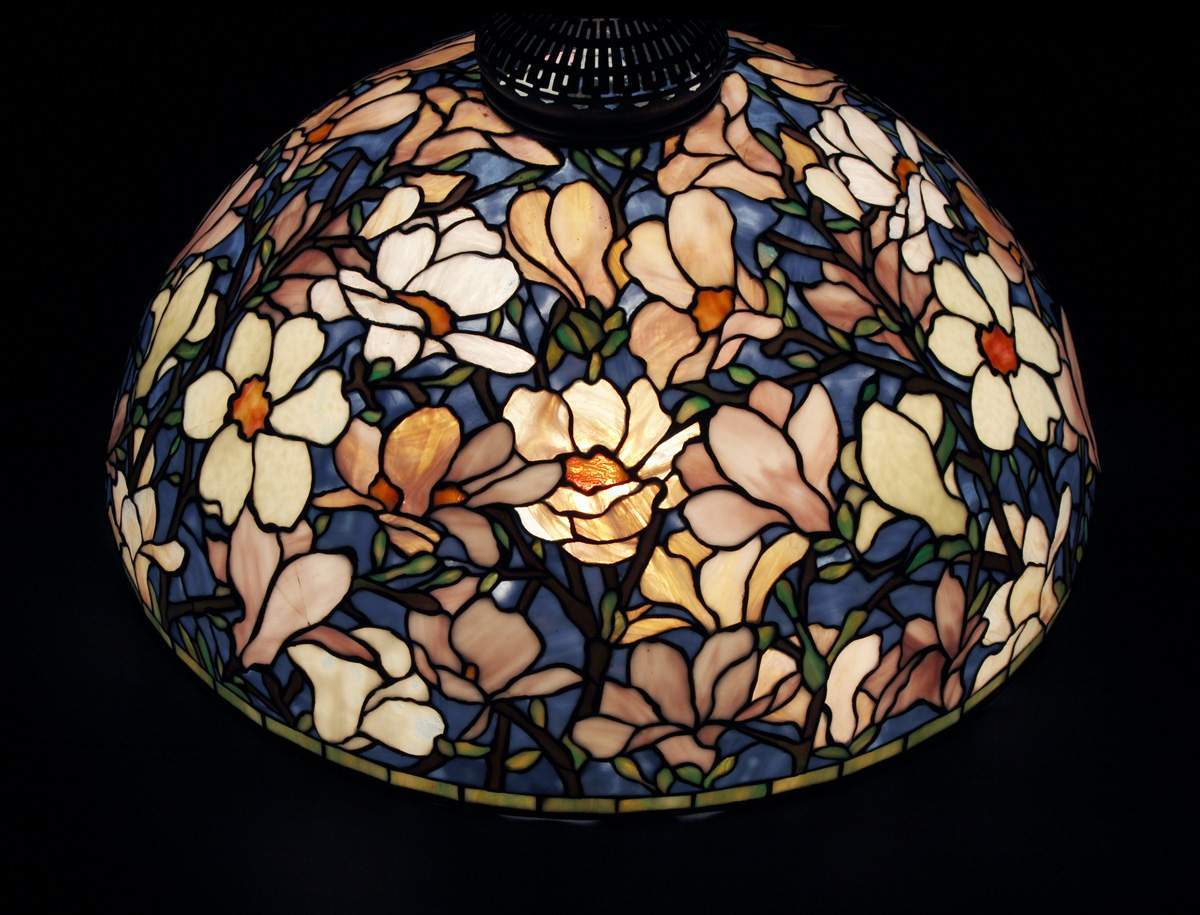
Sgn. Tiffany Studios, NY Magnolio Floor Lamp
Hammer Price:
$661,000
Learn How to Authenticate a Tiffany Lamp
Quick tips to gauge if you’re dealing with an antique Tiffany lamp or a reproduction.
Tiffany Studio lamps are extremely valuable and rare, making them a high-ticket item for both buyers and sellers. But, given their luxury status, there are also many dupes out there. Starting as early as the 1920s, Tiffany-style lamps were created in an effort to capitalize on the popularity of Tiffany Studio lamps. While a real Tiffany Lamp could sell for upwards of 3.5 million dollars, a reproduction max’s out at $5,000.
Remember, if you see an antique Tiffany lamp for sale at a price that seems too good to be true, it likely is.
While it takes a credentialed Tiffany lamp expert to truly authenticate a vintage Tiffany Studios lamp, there are certain tell-tale signs and characteristics that can help you determine quickly if the lamp in front of you is authentic or a reproduction.
1. Research Its Origins
If the lamp has had only a single owner (or has stayed in one family tree), then it’s likely an authentic Tiffany Studios lamp. If someone has a Tiffany lamp, they’re likely not going to let go of it easily, which is why these lamps typically originate from a single owner. If you see a supposed Tiffany lamp at an auction house, ask the operator to tell you more about its background; in most cases, authentic lamps will have an established home with a rich history of origin, which makes Tiffany Studios lamps so sought after.
2. Check The Base
The overwhelming majority of authentic Tiffany stained glass lamps have hollow bases made of pure bronze, with a select rare few having art pottery bases. Original Tiffany lamps also sometimes have a ring of lead in the base, which was added to prevent them from becoming too top-heavy once the stained glass shades were added (given the bronze bases themselves aren’t that heavy). If your lamp doesn’t have a bronze base, ringed with lead, it’s like just a Tiffany-style lamp rather than the real thing.
Also, be aware that bronze develops a beautiful patina over time. This oxidation process causes the bronze to develop a film that’s slightly brown or green in hue. While the change in color represents a slight degradation of the original metal, it is still a desirable signal that the base is indeed made of bronze. However, you can’t look for patina alone, as this can be faked through paints – which can be very convincing.
3. Review The Material Quality – Look Out For Paint
The artisans who constructed Tiffany stained glass lamps made them entirely by hand with the highest quality materials available. If the lamp itself or composing materials look cheap/poorly attached, it’s likely not a genuine Tiffany lamp. The shade is a great place to check the quality of materials; if the glass seems painted or too tightly attached to the base of the shade, it’s like a reproduction, as Tiffany created their colors and textures with the glass itself. There shouldn’t be any paint present on an original Tiffany Studios piece.
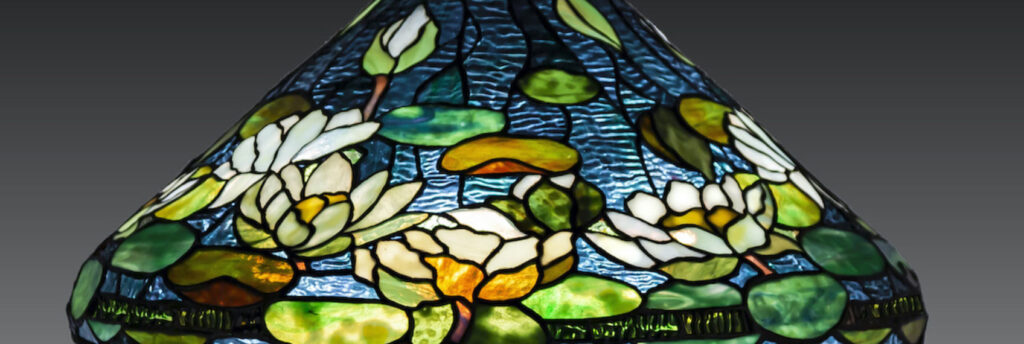
It’s also important to note that Tiffany lamps are now antiques, so it’s natural for some of the glass pieces to have come slightly loose, as the bonding materials have broken down over time. If you tap the shade and hear a loose rattle of the glass, it’s likely authentic.
4. Identify Relevant Stamps & Signatures
Tiffany Studios had an array of stamping and signature styles they used throughout the creation of Tiffany lamps, so it’s important to become familiar with some of the more obvious dupes. One major thing to identify is whether or not the letters in the stamps are capitalized. If the letters are in all caps, it’s likely legit. If there is a mix of upper and lower case letters, it’s like a reproduction.
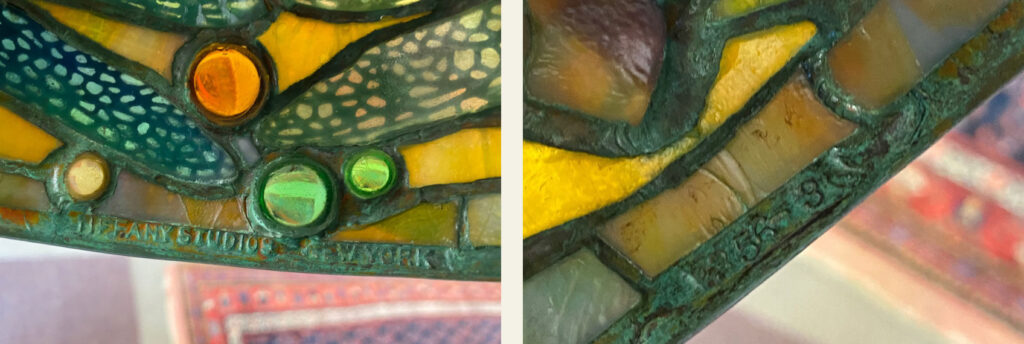
Another way to identify an authentic, antique Tiffany lamp is to look for the maker’s mark. The marking of a real Tiffany Studios piece includes the company name, “Tiffany Studios New York.” Some even have serial numbers included. If the Tiffany logo is off-center, tilted, or has different size letters, the lamp is probably a reproduction.
5. Check The Switch
Genuine Tiffany lamps will have a turn-paddle knob to turn it on and off, with a select few having a pull chain or switch at the base. Some of the older models may even be oil lamps. If it has any other type of switch fixture, the lamp is probably just a Tiffany-style reproduction.
6. Identity A Motif
Every Tiffany Studios lamp has a unique motif, and some were even custom designs. There are several popular motifs the studio used in their designs, including:

Favrile glass
While known for featuring beautiful mosaics, some of the first Tiffany Studios lamps ever produced were actually blown glass lamps. The favrile technique produced beautifully pigmented often iridescent glass shades.
Flora
Floral motifs were characteristic in many Tiffany Studio lamps. The glass used in the shades was often vivid in color with unique textures, resembling flowers and other natural elements. Bases often matched the shades, with wood or tree trunk-esqe styling being extremely popular.
Fauna
Animals were also featured heavily in Tiffany Studio lamp motifs. Insects such as dragonflies, butterflies, and spiders were often included, and there are even some designs that mimic peacock feathers. Select pieces even have insects with wings that lift away from the shade itself, making a three-dimensional shape.
Geometric
Designers took inspiration from geometric forms, creating intricate patterns in the glass using repeated simple shapes like rectangles and squares.
7. Look Into The Glass
Tiffany Studios was, and is, known for making beautiful, rich colors and textures in its glass. One style they’re particularly known for is “confetti glass”, which involves adding small specks of colored glass into another to create a speckled, confetti-like look. Check for this feature to help determine if you have an authentic Tiffany lamp.
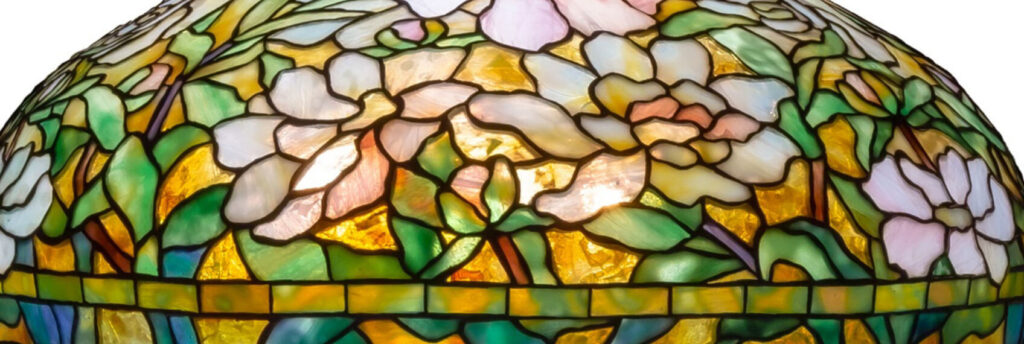
Another color to look out for is gold – Tiffany Studios were known for gold-colored, slightly-translucent glass with an amber sheen. If the gold glass in your lamp looks like it has a slightly green or silver sheen, it’s probably not authentic.
Again, while it does take an expert eye and years of training to know how to authenticate a Tiffany lamp, these quick tips will help you get a sense of if you’re working with the real deal or a dupe. And, as always, we recommend getting a formal Tiffany lamp appraisal from a reputable dealer.
Do You Have a Tiffany Studios Lamp?
Find out how much your antique Tiffany lamp is worth with a certified Cottone Auctions appraisal.
Our professional evaluations of personal property assets can be used for the purpose of trust valuation, insurance needs, charitable donations, etc.
Please complete the request form at right and upload at least one photograph of your Tiffany Studios item.
We strongly suggest including the following:
- Photos: Clear color images of the front & back, with close-up details of any signature or maker’s mark. One photo is required; additional photos will allow us to accurately assess your item(s).
- History: Any information you may have regarding when & how the item was acquired, the dimensions of the item, and any additional documentation.
Our documented appraisal is yours to use as you need. If you wish to sell your item(s) after receiving a Tiffany lamp appraisal, we hope you will consider Cottone Auctions as your fine art and antique consignment partner.
